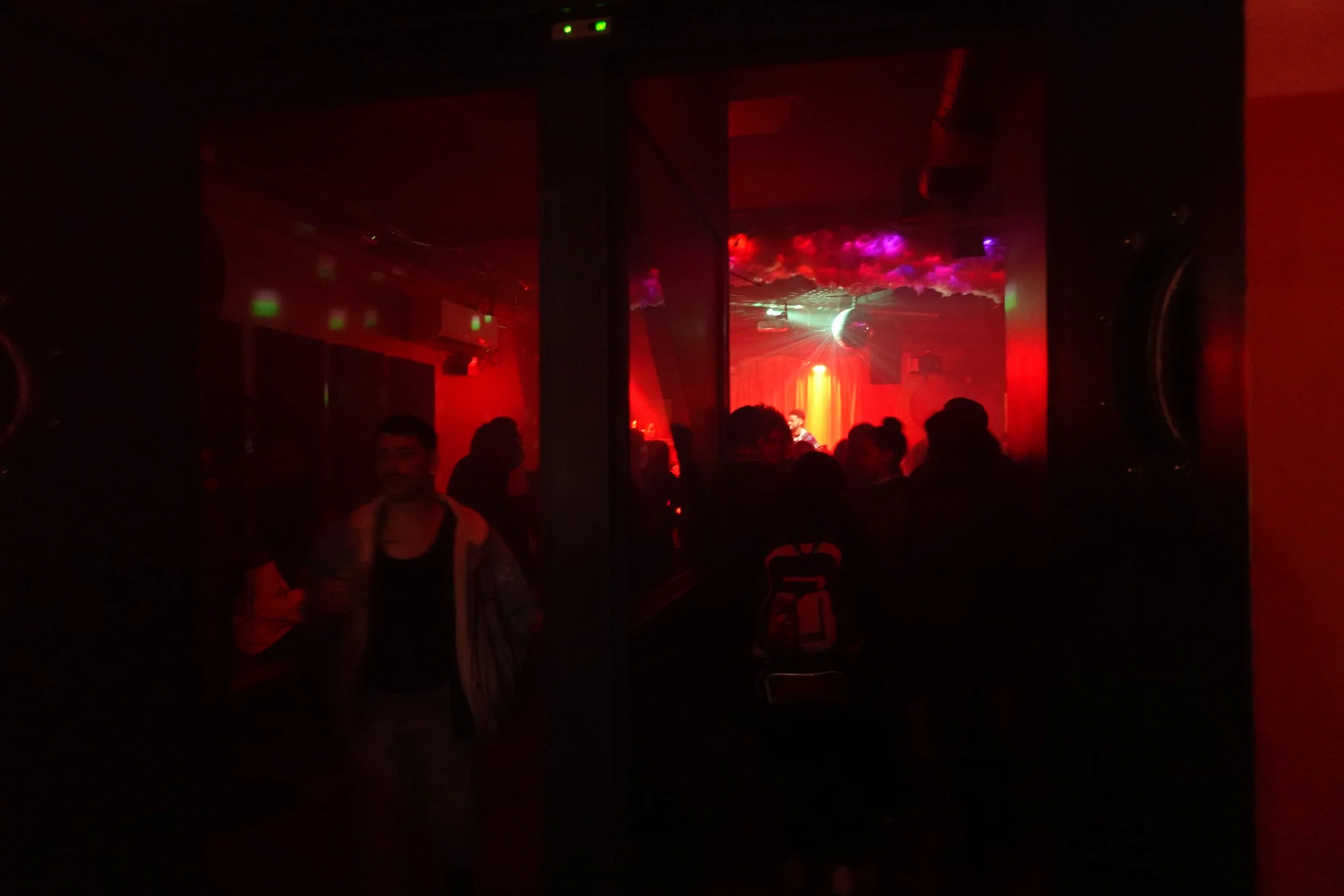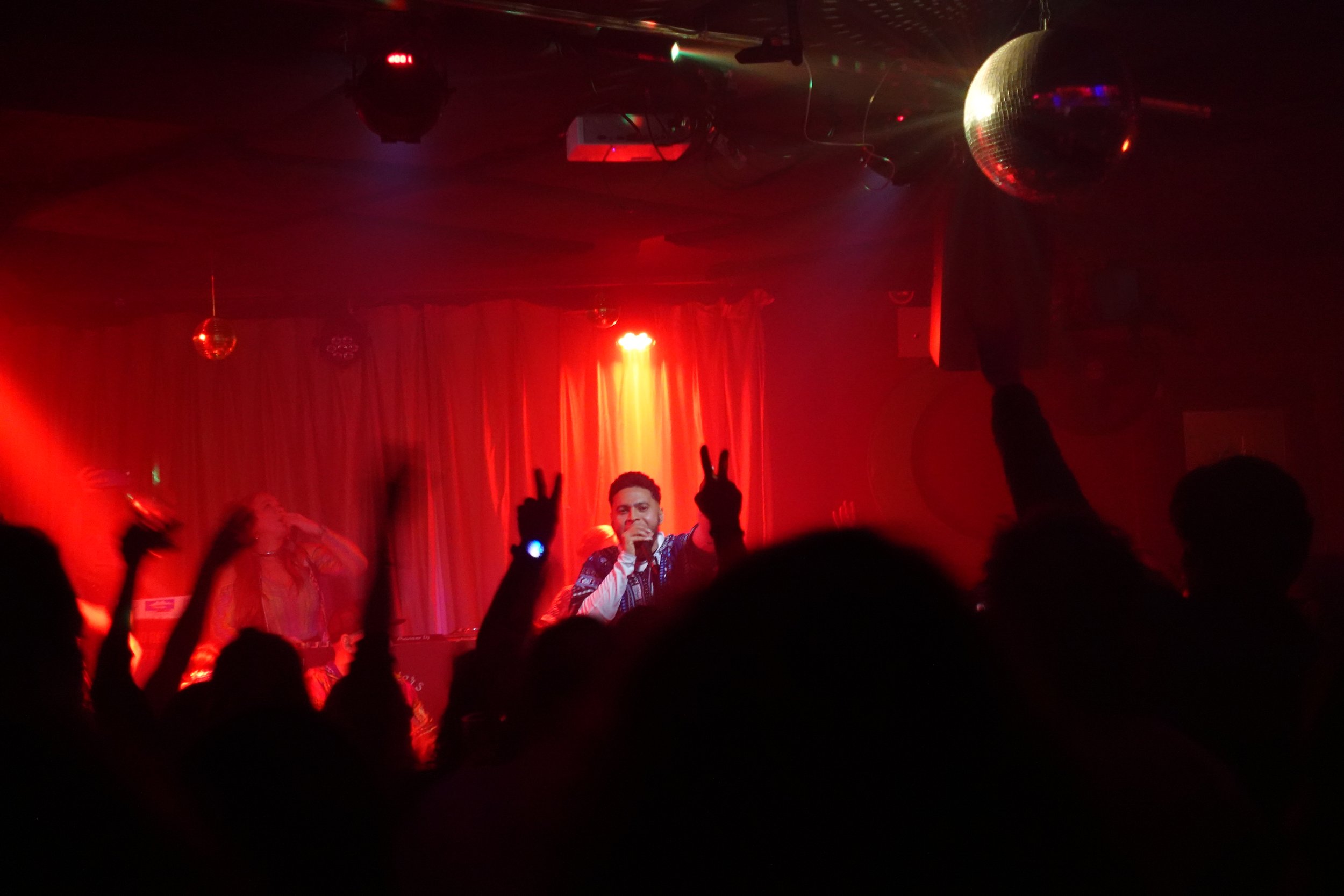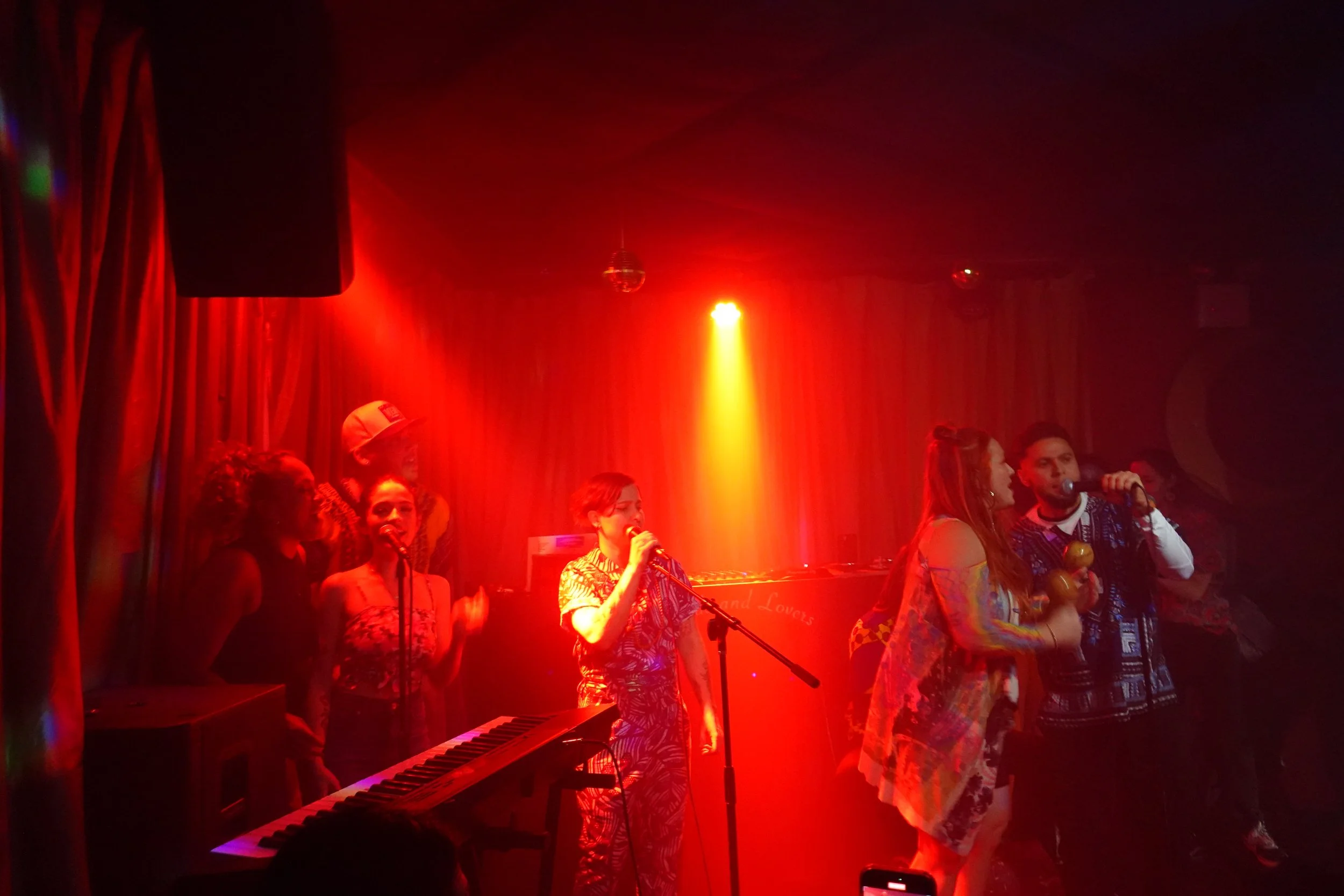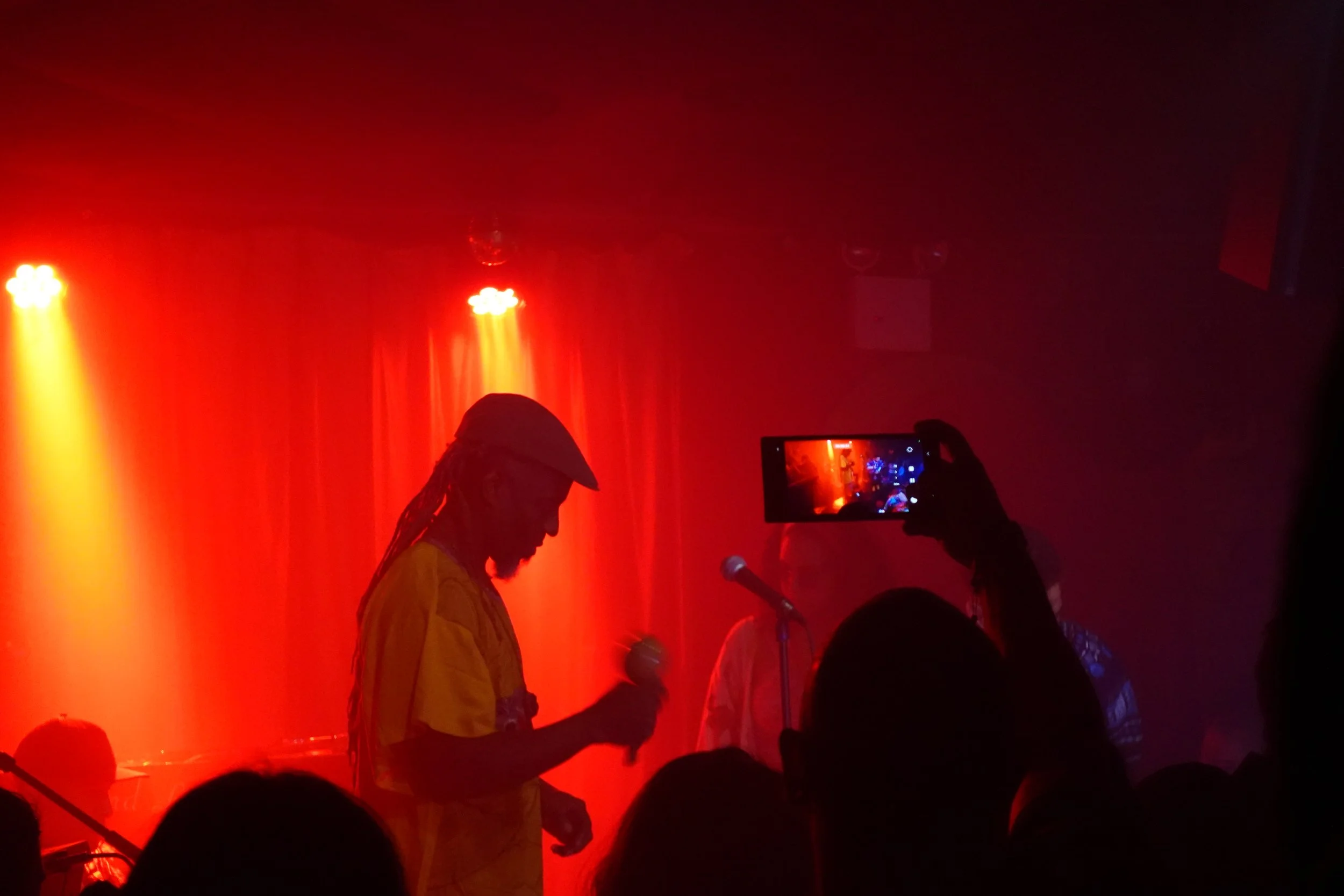Tambor y Caña: A Sonic Aesthetic Movement in the Venespora
The sonic aesthetic manifestations that emerge from los tambores emulate the sound of a heartbeat, reverberating in the bodies of those who dance to it. As I approach the corner of Dean Street and Classon Avenue in Crown Heights late on a Friday night, echoes of los tambores emanate from Friends and Lovers, a local favorite that functions as a bar, community space, and performance venue. I hear resonances of the syncopated rhythm of Calipso de El Callao, the Venezuelan derivative of the Trinidadian Calypso, played at a moderate speed with an array of loud vocal harmonizations. Upon entering the venue, a confluence of dancing bodies, laughter, and Venezuelan accents welcome me. Immediately, it takes me back to memories of family gatherings and trips to Güiria, a city in Venezuela relatively near my mother’s hometown of Cumana. However, here I was, disoriented by the sounds of my native Venezuela in Brooklyn. What was I stepping into?
That day the crowd gathered in honor of Venezuela’s Carnaval de El Callao, an event that Mariana Martín Capriles, a.k.a. MPeach, and the musical group Tambor y Caña organized. As one of the fastest-growing immigrant groups in New York and across the United States for the first time, Venezuelans are living through an unprecedented event in our country’s history that has led many of us to form alternative communities and kinship networks. Amidst the growing Venezuelan diaspora, or the Venespora, Tambor y Caña strengthens diasporic bonds and communities by organizing musical events, performances, and workshops all over New York City that center Afro-Venezuelan aesthetics through dance, percussion, and vocals. One of the attendees I met at the Carnaval event shared with me that he was able to find leads on part-time jobs that eventually allowed him to find stable housing, all through connections made at Tambor y Caña events. “Esto es comunidad,” he tells me.
For the cofounders of the group, Willie Quintana and Daniel Prim, community, education of Afro-Venezuelan culture and sonic traditions, and dissemination of the sounds of the tambores across the United States are why they created the group in May 2017. Quintana and Prim met by chance when they worked together after moving to New York City. Quintana emigrated to the city from Venezuela around 2015, and Prim arrived the following year. The idea for Tambor y Caña arose after the two discovered their mutual knowledge and passion for Afro-Venezuelan music and percussion.
While Prim studied music formally, Quintana did not. Family gatherings and spending time in los pueblos served as Quintana’s schools. The two invited New York–based Kevin Costante and Detroit-based Jeickov Vital to join the group, and they began to play los tambores together. Tambor y Caña’s first toque was at Santa Salsa, a Venezuelan fast-food restaurant on May 28, 2017. Quintana describes the group’s first public performance as “una euforia total” for Venezuelans in New York. From that moment on, the Tambor NYC movement grew thanks to support from the NYC-Venesporan community.
Quintana considers Tambor NYC more akin to a movement since other projects—for example, Escuela de Tambor Afro-Venezolano y Percusión Afro-Latina (ETAPA) and TamborEllas—have evolved out of it.
ETAPA is a project that Quintana brought with him from Venezuela. Initiated in March 2021, a year into the COVID-19 pandemic, ETAPA works as an education program to construct workshops that teach elementary school, high school, and university students about Afro-Venezuelan percussion. However, anyone is welcome to join the workshops and propose education initiatives.
In true domino effect fashion, TamborEllas arose from ETAPA workshops, primarily through conversations between Quintana and a group of seven Venezuelan women living in the city with an interest in learning Afro-Venezuelan rhythms and percussion. They started to attend the workshops to learn and practice los tambores together in community but without an official band name in October 2022. Later on, established joropo innovator Mafer Bandola provided Quintana with the name “TamborEllas” after she participated in a couple of ETAPA workshops.¹ In or around January 2023, the group officially launched as it began to perform together and organize events, highlighting how Tambor NYC shares its musical experiences and passions so that others can learn and make it their own.
What stands out most to Quintana is how all the members of TamborEllas consisted of Venezuelans who were beginning to engage with their obscured Afro-Venezuelan histories and roots due to forced displacement and emigration from their country alongside the complexities of Venezuelan understandings of Blackness. From Quintana's perspective, the members of TamborEllas formed a deeper connection with their Afro-Venezuelan identities through the music.
Being outside of Venezuela has allowed minoritarian groups such as Afro-Venezuelans, among others like the queer and Indigenous communities, to embrace the multiplicities of their identities without judgment. The label “Afro-Venezuela” often garners divisive opinions among Venezuelans due to its association with Hugo Chávez and the Bolivarian Revolution. It’s also the explicit denial and devaluation of Blackness, which has its roots in colonialism, and the uplifting of the ideology of mestizaje, known colloquially as café con leche. Despite the abolition of slavery by 1854, the systematic condemnation and discrimination of Afro-Venezuelans have contributed to the failure to recognize their rights, how they built and defended the country, and their influences on the national culture in music, language, food, and social life. However, under Chávez’s presidency, this started to change. Starting in 2011, Afro-Venezuelans could finally self-identify as Afro-descendant in the national census. Until then, no official classification was available for the community.
“Together, we can honor, through ephemeral performances and spaces across the city and the Venespora, to whom we owe our history and inheritance.”
All of this history, overshadowed by colonialism and negative associations with the socialist revolution, stays present in Quintana’s mind as Tambor NYC promotes and disseminates dance, songs, and the performance of los tambores and other instruments used in traditional Afro-Venezuelan music. Referencing the history of the Transatlantic Slave Trade—which brought over 100,000 enslaved people to Venezuela from present-day Angola, Benin, Congo, Gambia, Nigeria, and Senegal—Willie proclaims in Spanish, “The tambores are from Africa. That is the history.” Even though there are instruments, such as el cuatro (which has roots in the Spanish guitar), and musical styles that originated in Venezuela, we tend to leave out that these traditions are only possible because of Afro-Venezuelans. Tambor y Caña is here to remind us of what goes unacknowledged. Together, we can honor, through ephemeral performances and spaces across the city and the Venespora, to whom we owe our history and inheritance.
The sonics and instrumentation used in its performances revolve around the manifestation of San Juan Bautista—an appropriated Afro-Catholic saint honored every June 24 to celebrate his birth and commemorate the resistance of enslaved Africans. Historians have proposed a direct relationship to Africa: “The reason for choosing Saint John as the patron saint of [Black people] is the fact that in West Africa [Black people] celebrate numerous festivals around the Summer Solstice with songs and dances in masks.”² The Catholic Church gave enslaved Africans, primarily working the cocoa and coffee plantations along the Caribbean coast of Venezuela, a day off to celebrate the saint, which provided them a chance to subvert, and in turn resist, the normative practices of the church and craft the celebrations as their own through music, singing, and dancing practices. Over time the Festival of San Juan has adopted a syncretic form that combines European and African cultures in one of the most important celebrations of the year. Tambor NYC brings the celebrations to the city every year through assorted collaborations with local artists, musicians, and vendors that garner attention across communities and a big audience.
“I never imagined I’d live outside of Venezuela, but at the very least, Tambor helps me feel like I’m still there.”
Quintana believes that the increasing interest in Afro-Venezuelan music and its popularity in the New York musical scene is a direct product of the diaspora. Nathaly Goyo, a woman who began attending Tambor NYC events in 2021, shares this sentiment, explaining that the events are welcoming and generate a positive impact on the NYC community. The openness of the events allows for cross-cultural exchanges between diverse diasporic communities. It’s also a piece of home, one Goyo never imagined she’d need. “I never imagined I’d live outside of Venezuela, but at the very least, Tambor helps me feel like I’m still there,” she tells me.
Historically, Venezuelans were a minority in the United States, especially in New York City. Before the economic and political crisis in Venezuela and the mass exodus that rapidly evolved in 2014, mostly Venezuelans from an elite class had the financial opportunity to live and study in New York City. However, we are now seeing Venezuelans of varying socio-economic groups—from los barrios, la costa, los pueblos—settling in the city as over 110,000 migrants have arrived since spring 2022³. What does this mean? For Quintana, it is an enriching occurrence because, over the past seven years, he has witnessed an evolution of how Venezuelans relate to one another. Moreover, the Venezuelans who arrive in the city from peripheral communities particularly those from los pueblos, can bring their musical expertise. “No one can play the traditional rhythms like those in los pueblos,” Quintana says. Those who arrive from such communities find solace with Tambor y Caña in addition to opportunities to network, find a job, and relocate from a shelter to an apartment or shared housing.
Albeit far from home, many Venezuelans have not only found community within Tambor NYC and its distinctive subgroups but also an opportunity to explore what it means to be a part of a diaspora community that is continually expanding and very much in the making. “People are trying to reconnect with their Venezuelan identity through an endless number of things,” Quintana says. “Art, gastronomy, whatever.”
His words are present in Cornell Professor Irina R. Troconis’s work on artistic manifestations and practices of what she calls “crafting nationness.” Troconis constructs “nationness as the nation outside the nation: a resonance, a feeling, and/or a residue that speaks to and of the nation without having to speak from it, that challenges assumptions regarding the what, where, and how of the nation, and that, as such, underscores movement, malleability, and indetermination.” Following this line of thought, one can interpret what Tambor NYC and its members are doing as crafting a malleable diasporic identity within ephemeral spaces that move outside of the nation to circulate new forms of what Troconis calls “Venezuelanness.” In turn, the crafting of its events and performances inspires alternative kinship ties and safe spaces that feel like a home lost, or perhaps, never had.
Back at Friends and Lovers, I saw a disco ball spinning between the musicians and myself, all against a backdrop of neon lights and simulated cotton clouds. Everyone I could see was completely present in singing and dancing to the music of calipso and los tambores, reinforcing feelings of belonging and community amidst change, displacement, and loss. I thought to myself, “Willie has really built a sonic, communal movement.” The repetitive and narrow melodic patterns of the chorus and percussion enveloped us that night as we celebrated Afro-Venezuelanness and the Carnaval de El Callao.
Footnotes
¹ Bandola does not actively participate in TamborEllas, as she primarily dedicates her time to serving as the director of the Pipiris Band, a joropo ensemble in which Quintana plays the Venezuelan string instrument known as the cuatro. Per Bandola, Venezuela’s joropo is a musical style and cultural expression that circulates all over Venezuela. She also tours with her all-female Latinx band LADAMA.
² Pollak-Eltz, Angelina. La esclavitud en Venezuela: un estudio histórico-cultural. Caracas: Universidad Católica Andrés Bello, 2000.
³ There is a wealth of academic and news articles detailing the mass exodus from Venezuela that increased rapidly after the death of Hugo Chávez and the subsequent election of Nicolás Maduro in 2013, and the mass student protests in 2014. (You can trace the first wave of migration to 2009). According to the UN Refugee Agency, these events have displaced over 7.7 million Venezuelans across international borders. For more information, please see the following articles: “Hugo Chavez Is Scaring Away Talent;” “For Many Migrants Being Bused from New York City to Other Towns, Hostility Awaits;” “Venezuelan Migrants Scored a Big Victory. How Will It Affect New York?” and “Venezuelan Migrants Could Soon Create New York’s First ‘Little Caracas.’”
Waleska Solórzano is a Ph.D. student of Latin American Studies in the Department of Romance Studies at Cornell University. She received her MA in Philosophy with a concentration in Ethics and Public Affairs and a CERG in Women and Gender Studies from George Mason University, where she studied climate ethics, gender and sexuality, and philosophy of art. Her research focuses on aesthetic manifestations of the Venezuelan diaspora, or what she terms the Venespora, vis-à-vis subversive artistic practices. She primarily engages with digital humanities, Latinx diasporas, politics and performance, queer cultures, and Venezuelan studies. She is currently developing a digital platform for Venezuelan artists titled “The Venesporan Artists Project” under the auspice of the Digital Co-Lab at Olin Library and the HASTAC Scholars program, with funding from the Society for the Humanities. Visit the platform (in-process) for more information: https://www.venesporanartists.org/.





